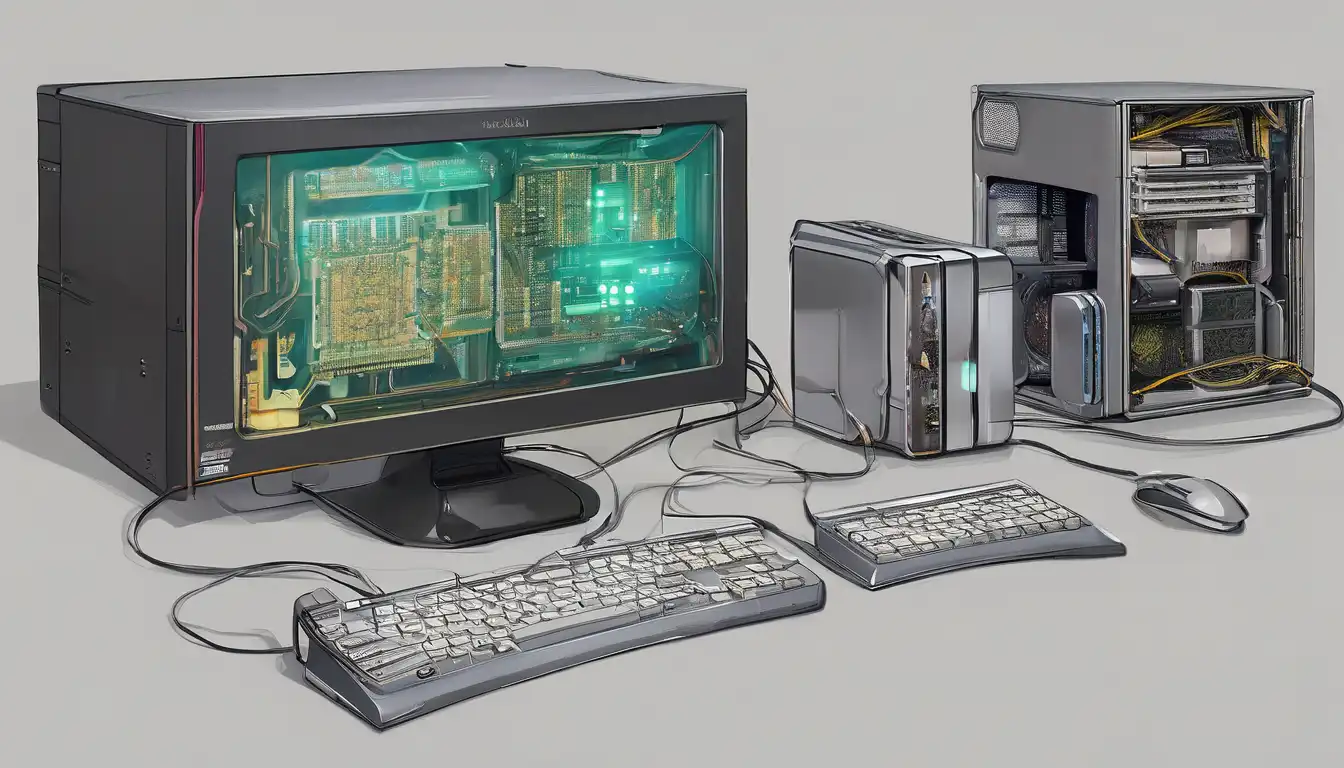Revolutionary Advances in Computer Hardware Technology
The landscape of computer hardware technology is undergoing unprecedented transformation, with innovations emerging at an accelerated pace. From quantum computing breakthroughs to AI-optimized processors, the latest developments are reshaping how we interact with technology and pushing the boundaries of computational power. These advancements promise to revolutionize industries, enhance user experiences, and create new possibilities in digital transformation.
Next-Generation Processor Architecture
Processor technology has taken quantum leaps forward with the introduction of 3D stacking and chiplet designs. Major manufacturers like Intel, AMD, and ARM are implementing innovative approaches that significantly boost performance while reducing power consumption. The shift from traditional monolithic designs to modular chiplet architectures allows for better scalability and customization, enabling specialized processors for specific applications such as artificial intelligence and machine learning workloads.
Recent developments in processor technology include the integration of neural processing units (NPUs) directly into consumer CPUs, providing dedicated hardware for AI tasks. This integration marks a significant milestone in making AI capabilities accessible to mainstream users. Additionally, advancements in manufacturing processes have enabled the production of chips with transistor densities previously thought impossible, following Moore's Law into new territories.
Memory and Storage Innovations
The memory and storage sector has witnessed remarkable breakthroughs that are redefining data access speeds and capacity. DDR5 memory technology has become mainstream, offering substantially higher bandwidth compared to previous generations. Meanwhile, storage solutions have evolved with PCIe 5.0 SSDs delivering read/write speeds that were unimaginable just a few years ago.
Emerging technologies like 3D XPoint and phase-change memory are challenging traditional NAND flash limitations, offering faster access times and greater endurance. These innovations are particularly crucial for data-intensive applications such as real-time analytics, video editing, and scientific computing. The continued evolution of storage-class memory bridges the gap between volatile and non-volatile storage, creating new possibilities for system architecture.
Graphics and Display Technology Evolution
Graphics processing units have transcended their traditional gaming and rendering roles to become essential components in artificial intelligence and scientific computing. The latest GPU architectures feature dedicated tensor cores and ray tracing capabilities that enable realistic visual simulations and accelerate complex computations. These advancements are driving progress in fields ranging from medical imaging to autonomous vehicle development.
Display technology has kept pace with these developments, with microLED and OLED advancements offering higher refresh rates, better color accuracy, and reduced power consumption. The integration of hardware-accelerated ray tracing in consumer graphics cards represents a significant milestone in real-time rendering capabilities, bringing cinematic-quality graphics to interactive applications.
Quantum Computing Hardware Progress
Quantum computing hardware has moved from theoretical research to practical implementation, with several companies demonstrating working quantum processors. These systems leverage quantum bits (qubits) that can exist in multiple states simultaneously, enabling exponential increases in computational power for specific problem types. While still in early stages, quantum hardware advancements are showing promise for solving complex optimization problems and simulating molecular interactions.
The development of more stable qubit technologies and improved error correction methods has brought quantum computing closer to practical applications. Major technology companies and research institutions are investing heavily in quantum hardware development, recognizing its potential to revolutionize fields such as cryptography, drug discovery, and materials science.
Cooling and Power Management Breakthroughs
As hardware components become more powerful, thermal management has emerged as a critical challenge. Innovative cooling solutions including liquid cooling systems, vapor chamber technology, and advanced thermal interface materials are enabling higher performance while maintaining optimal operating temperatures. These developments are essential for sustaining the increased power densities of modern processors and graphics cards.
Power efficiency has become a primary focus across all hardware categories. Advances in voltage regulation, power delivery systems, and energy-efficient circuit design are reducing the environmental impact of computing while extending battery life in mobile devices. The integration of AI-driven power management algorithms allows systems to dynamically adjust performance based on workload requirements, optimizing energy consumption without sacrificing user experience.
Connectivity and Peripheral Innovations
The latest hardware innovations extend beyond core computing components to include revolutionary connectivity solutions. Wi-Fi 7 technology promises multi-gigabit wireless speeds with reduced latency, while Thunderbolt 5 specifications are set to double data transfer rates compared to previous generations. These advancements are crucial for supporting bandwidth-intensive applications and enabling seamless connectivity across devices.
Peripheral technology has also seen significant improvements, with haptic feedback systems, eye-tracking technology, and brain-computer interfaces becoming more sophisticated and accessible. These innovations are creating new paradigms for human-computer interaction, making technology more intuitive and responsive to user needs.
Future Outlook and Industry Impact
The continuous innovation in computer hardware technology is driving digital transformation across all sectors. As hardware capabilities expand, they enable new applications in artificial intelligence, virtual reality, and edge computing. The convergence of these technologies is creating synergistic effects that amplify their individual impacts, leading to exponential growth in computational possibilities.
Looking ahead, we can expect further integration of specialized accelerators, continued miniaturization of components, and the emergence of novel computing paradigms. These developments will not only enhance existing applications but also enable entirely new categories of technology that we can scarcely imagine today. The hardware innovations currently underway are laying the foundation for the next generation of computing experiences that will transform how we work, communicate, and interact with the digital world.
The rapid pace of innovation in computer hardware technology demonstrates the industry's commitment to pushing boundaries and solving complex challenges. As these technologies mature and become more accessible, they will democratize advanced computing capabilities, empowering individuals and organizations to achieve unprecedented levels of productivity and creativity.
